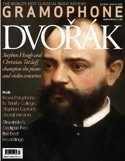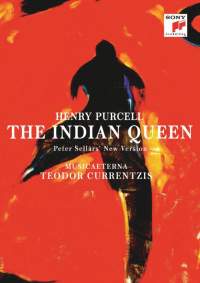Texte paru dans: / Appeared in: |
|
|
Outil de traduction (Très approximatif) |
|
|
Reviewer: Neil Fisher
The American comedian Tina Fey has a deadly one-liner about the Oscar-spattered film 12 Years a Slave. ‘What a great movie!’ she said. ‘It totally changed my views on slavery.’ So it is with Peter Sellars’s adaptation of The Indian Queen, which in the course of its three and a half hours totally changed my views on the rape and slaughter of indigenous peoples by colonial oppressors.
Purcell’s The Indian Queen has never successfully reigned over audiences, partly because it was the product of a last-minute decision to ‘gett up [sic]’ Robert Howard and John Dryden’s 1664 play with music by the composer, who then died with the piece unfinished. Sellars ditches the original scenario and adds a bucketful of Purcell’s theatrical and sacred music from elsewhere. There are new characters and a lengthy narration supplied by Maritxell Carrero from Rosario Aguilar’s novel The Lost Chronicles of Terra Firma, describing the Spanish conquest of modern-day Guatemala from the Mayan perspective. The production arrived at English National Opera after it had been performed at the Teatro Real in Madrid, where it was filmed for DVD.
At least for the first moments of his The Indian Queen the sinuous choreography from Christopher Williams, punchy playing from Perm Opera’s MusicAeterna orchestra under Teodor Currentzis and bright street art-style designs from Gronk establish a vibrant setting for Purcell’s music. The Perm chorus, Mayans in name if not costume (they are in kindergarten-teacher uniform of slacks and primarycoloured T-shirts) also field Purcell’s sacred anthems with refreshing directness – their tense, prophetic Blow up the trumpet, which anticipates the destruction to come, is one of the high points.
Yet the more the evening slides on, the more the tools in Sellars’s armoury grow rusty. Carrero delivers her narrations at feverish pitch, yet there is little to get the blood pumping from sermons on the moon and doves and the wind and the lagoon. These great Mayan truths are ignored by the Spanish, who wear fatigues, brandish machine guns and dance badly. Their Catholic priest looks on, mute and unhappy.
All the performers work hard but increasingly seem as if they are performing in a vacuum. ‘I am weary of my groaning,’ pleads Julia Bullock’s Teculihuatzin late in the show, and she is not the only one. The sympathetic and hard-working Bullock is the Queen who has crossed the divide from Mayan to Spanish by marrying Noah Stewart’s (underused) Don Pedro, but the tension implicit in that premise is slowly erased by po-faced contemplation and emotional hand-holding.
Nadine Koutcher’s Doña Isabel
gracefully delivers ‘O Solitude’ and much other plangent music, and the two very
different countertenors, the soprano‑ish Vince Yi and the silkier-sounding
Christophe Dumaux, both impress. Yet despite moments of poise and beauty
carefully sculpted by cast and conductor, feebleness and flabbiness dominate.
Sellars adores Purcell; but the composer who worked in a competitive world of
fickle audiences and eye-popping spectacle would have been baffled by this
slow-motion veneration. |
|
|
|
|
|
Cliquez l'un ou l'autre
bouton pour découvrir bien d'autres critiques de CD |
|




